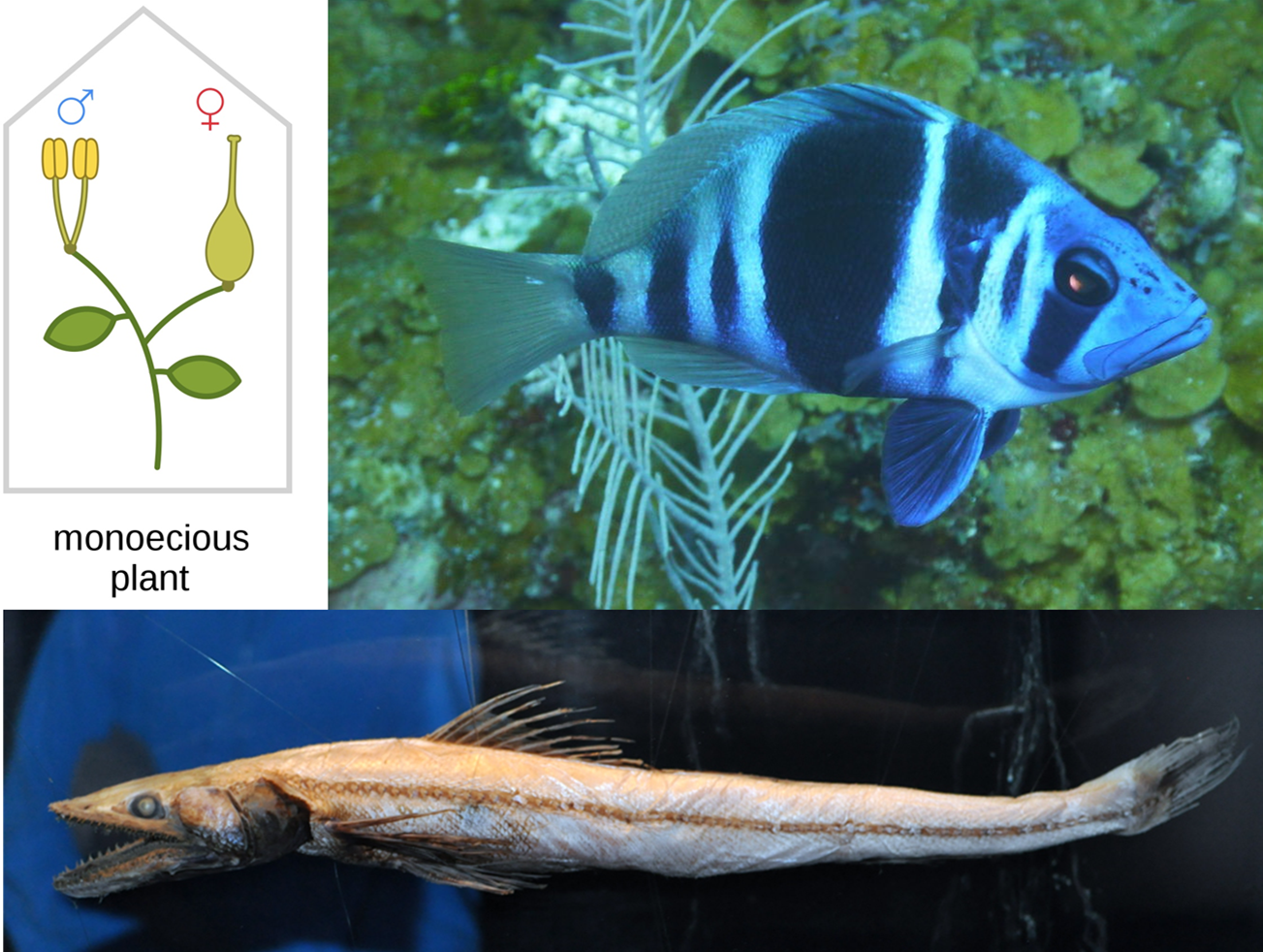8.8 What about hermaphrodites – and biological sex?
First, let’s make sure we are all clear about the term hermaphrodite. An individual who makes both small and large gametes at some point in life is called a hermaphrodite. Hermaphroditism is particularly common in marine organisms. If you were to go snorkeling, about a quarter of the fish that you see will be hermaphroditic [1].
Note: Hermaphroditism does not exist in humans. While some humans have intersex conditions, they are not hermaphrodites and the term “hermaphrodite” should never be used to describe an intersex person. Historically, this term has been applied to humans in a derogatory way.
Some organisms first produce one kind of gamete and then at some point in their life begin to produce the other kind of gamete. These are sequential hermaphrodites. Some examples include clownfish which all start as male, but if the large female is lost then the largest male will become female. Lysmata are shrimp that all begin as male but become hermaphrodites, able to simultaneously produce sperm and eggs.
 Figure 8.27 Clownfish (left) and Lysmata (right) are sequential hermaphrodites [2]
Figure 8.27 Clownfish (left) and Lysmata (right) are sequential hermaphrodites [2]
Some organisms produce both sperm and eggs at the same time. These are simultaneous hermaphrodites. Most plants are simultaneous hermaphrodites (about 80% of angiosperms–plants with flowers) as well as many fish like hamlets, a small coral reef bass, deep sea organisms like a bottom-dwelling worm called Yoda demiankoopi, and a deep sea lizardfish called Bathysaurus ferox.

Figure 8.28 Monoecious plant (top left), Indigo Hamlet (top right), and Bathysaurus ferox (bottom) are simultaneous hermaphrodites [3]
Points to Ponder
Before moving into the next section consider the following two questions.
- How might it be beneficial to an individual to produce both eggs and sperm?
- Similarly, can you imagine any costs associated with hermaphroditism?
- 1. Roughgarden, J. (2013). Sex within Bodies. In Evolution’s Rainbow: Diversity, Gender, and Sexuality in Nature and People (1st ed., pp. 30–42). University of California Press. ↵
- Image "Amphiprion ocellaris (Clown anemonefish) in Papua New Guinea" by Nick Hobgood. Shared with CC-BY-SA 3.0 license. Image "Lysmata amboinensis Shrimp" by Lonnie Huffman, shared with CC-BY-3.0 license. ↵
- Image "Monoecious plant diagram" by Nefronus, shared with CC-BY-SA license. Image " Indigo Hamlet, Grand Cayman, near North Wall" by Tomh009, shared with CC-BY-SA 3.0 license. Image "Bathysaurus ferox" by Citron, shared with CC-BY-SA 3.0 license. ↵

